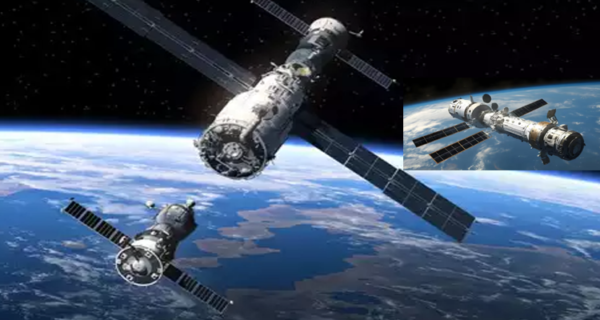In a historic endeavor, the Indian Space Research Organisation (ISRO) is pushing the boundaries of its space capabilities with the Space Docking Experiment (SpaDeX).
This ambitious mission aims to demonstrate the feasibility of autonomous docking between two satellites, a critical technology for future space exploration, satellite servicing, and interplanetary missions.
On December 30, 2024, ISRO launched two 220 kg satellites, named “Chaser” and “Target,” into orbit aboard a PSLV-C58 rocket.
The primary objective of SpaDeX is to test the satellites’ ability to autonomously rendezvous and dock—a procedure requiring exceptional precision and coordination. This milestone would place India among an elite group of nations capable of performing such advanced space operations.
The Trial Maneuver
As of January 12, 2025, ISRO achieved a significant step in the mission by conducting a trial maneuver. The Chaser satellite was successfully brought within three meters of the Target satellite, marking a critical phase in the docking procedure.
This achievement highlights ISRO’s growing expertise in space maneuvering and control systems.
However, unexpected drift between the two satellites during earlier maneuvers prompted mission controllers to delay the actual docking attempt. The drift issue is currently under analysis, with ISRO’s engineers reviewing trial data to ensure mission success in subsequent attempts.
“While the trial was a success in terms of achieving proximity, it revealed areas requiring fine-tuning before we proceed with the docking,” an ISRO official stated.
Implications of SpaDeX
The success of SpaDeX would be a landmark achievement for India, opening up new possibilities in space exploration and commercial applications. Autonomous docking technology is essential for:
- Satellite Servicing: Enabling repair and refueling of satellites, extending their operational lifespans.
- Space Station Operations: Supporting the assembly and maintenance of modular space stations.
- Deep Space Missions: Facilitating complex interplanetary missions involving multiple spacecraft.
By mastering docking technology, ISRO could also become a key player in the global space industry, offering advanced services and collaboration opportunities.
Global Recognition
The SpaDeX mission has drawn attention from international space agencies and industry experts, who recognize its significance in advancing India’s technological prowess. Dr. Radhakrishnan Nair, a leading space scientist, commented, “This experiment signifies India’s capability to tackle challenges in space autonomously.
It’s a step toward making India a leader in next-generation space technologies.”
Next Steps
While the docking attempt has been temporarily postponed, ISRO remains optimistic about achieving its goal.
The organization is meticulously analyzing trial data and preparing for another maneuver. The upcoming phases of the SpaDeX mission will be crucial in showcasing India’s ability to innovate and execute complex space operations.
As the world watches, ISRO’s progress in the SpaDeX mission exemplifies India’s determination to reach new heights in space exploration.
Success in this endeavor will not only bolster national pride but also pave the way for groundbreaking advancements in global space technology.
Also Read
Blue Origin’s New Glenn Rocket Poised for Historic Maiden Voyage
Blue Origin Set to Launch First New Glenn Rocket on January 10, 2025

